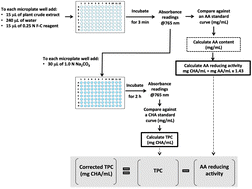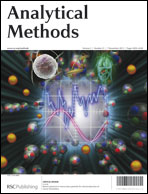The Folin–Ciocalteu assay revisited: improvement of its specificity for total phenolic content determination
Abstract
This study presents a review of the Folin–Ciocalteu (F–C) assay for total phenolic content (TPC) determinations and describes different approaches to improve its specificity. Phenolics are regarded as the molecules with the highest potential to neutralize free radicals. Therefore, their quantification is a common practice in different areas of food research. However, when determining TPC in plant food extracts, the presence of reducing interferants [ascorbic acid (AA)] produces inaccurate estimations of TPC values. Different methodologies have been proposed to improve the specificity of the F–C assay. These methodologies include: (i) the use of solid phase extraction (SPE) cartridges to separate interferants from phenolics; (ii) the calculation of a corrected TPC value based on the AA reducing activity present in the extract; and (iii) the pre-treatment of extracts with oxidative agents prior to TPC quantification. These methods are described in detail in the present study. Likewise, their advantages and disadvantages are discussed based on new experimental data. A simple modification of the F–C assay procedure is proposed to quantify both the TPC value and the AA reducing activity in plant food extracts. Values obtained by the modified F–C assay can be used to estimate a corrected TPC value.


 Please wait while we load your content...
Please wait while we load your content...